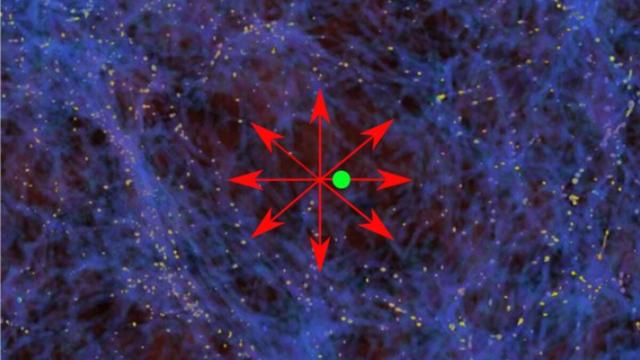M109 — galaktyka spiralna z poprzeczką.
Nieco ponad 6h naświetlania.
#galaxy
USAF C-5M Galaxy 86-0016 on final for Travis AFB, Fairfield, California April 2025 #C5M #TravisAFB #C5 #galaxy #Cargo #airlifter #travisafb #aviationphotography #planespotting #photography #aircraft #Nikon #aviationphotography #big
Gran Telescopio Canarias image of Arp 84, also known as NGC 5394 and NGC 5395.
This interacting pair is sometimes called the "Heron Galaxy". The larger spiral, NGC 5395 forms the body and wing of the heron and the smaller, two-armed NGC 5394 forms the neck, head, and beak of the bird.
Credit: GTC, IAC
Source: https://www.gtc.iac.es/multimedia/imageGallery.php
Kitt Peak image of Arp 78, also known as NGC 772.
One of NGC 772’s spiral arms is particularly prominent. This is likely due to gravitational interactions with its companion galaxy NGC 770, the small elliptical galaxy in the center near the top of the frame. The interactions left NGC 772's bottom arm elongated and asymmetrical.
Credit: KPNO, NOIRLab, NSF, AURA, A. Block
Source: https://noirlab.edu/public/images/noao-n772block/
So langsam aber sicher überlege ich mir ein „neues“ #Handy anzuschaffen.
Neu = gebraucht = ~ 5 Jahre alt
Mich interessieren keine Bestenlisten, sondern nur, ob das #Smartphone das kann, was ich möchte und habe zurzeit das #Samsung #Galaxy S20 Plus / Ultra ins Auge gefasst, recherchiere aber weiter.
APOD from 2021-02-24
Spiral #Galaxy M66 from #Hubble
Hubble's new image of M66, part of the Leo Triplet 30 million light-years away, shows its spiral structure and star-forming regions. Captured to study star formation and gas clouds, it features blue stars, pink hydrogen clouds, and dark dust lanes.
HD image at https://apod.nasa.gov/apod/ap210224.html
Our #SolarSystem Has a New Visitor: #Interstellar #Comet Could Be Nearly As Old as the #Galaxy Itself
APOD from 2013-02-08
NGC 6822: Barnard's #Galaxy
NGC 6822, or Barnard's Galaxy, is a small member of our Local Group in Sagittarius, 1.5 million light-years away. Despite its size, it teems with young blue stars and star-forming regions, as captured in a deep color composite image by the Lowell Amateur Research Initiative (LARI).
HD image at https://apod.nasa.gov/apod/ap130208.html
APOD from 2013-09-17
#Galaxy Cluster Abell 1689 Deflects Light
Hubble's image of Abell 1689 shows it warping space, creating curved images of background galaxies. Visible matter forms just 1% of the mass needed for this effect; dark matter accounts for the rest. Over 100,000 globular clusters are also found in the cluster.
HD image at https://apod.nasa.gov/apod/ap130917.html
Hubble image of Arp 186, also known as NGC 1614.
NGC 1614 is likely the remnant of a tidal interaction and the resulting merger of two galaxies — a large spiral and a much smaller companion.
Credit: NASA, ESA, STScI
Source: https://science.nasa.gov/asset/hubble/hubble-interacting-galaxy-ngc-1614/
Kitt Peak National Observatory image of Arp 18, also known as NGC 4088.
NGC 4088 is an asymmetric spiral galaxy, located about 40 million light years away.
Credit: KPNO, NOIRLab, NSF, AURA, Bonnie Fisher, Mike Shade, Adam Block
Source: https://noirlab.edu/public/images/noao-n4088shade/
Samsung Galaxy S25 FE zeigt sich vor offizieller Präsentation: Optisch ähnelt es stark den Top-Modellen der S25-Serie, setzt aber auf den älteren Exynos 2400e-Chip. #Samsung #Galaxy #FanEdition #GalaxyS25FE https://winfuture.de/news,152856.html?utm_source=Mastodon&utm_medium=ManualStatus&utm_campaign=SocialMedia

#leftyMemes #links intergalactic #antifa #anarchokommunismus media #anarchismus #kommunismus #autonome #galaxy #saturn #fau
Kitt Peak image of Arp 84, also known as NGC 5394 and NGC 5395.
The center of the smaller distorted spiral NGC 5394 is undergoing a burst of star formation. Interactions between this galaxy pair funneled gas into the center of NGC 5394, providing the raw materials for new stars.
Credit: KPNO, NOIRLab, NSF, AURA, D. Matthews, E. J. Jones, A. Block
Source: https://noirlab.edu/public/images/noao-n5394matthews/
APOD from 2005-10-20
The Andromeda #Galaxy in #Infrared
Astronomers used the Spitzer Space Telescope to capture Andromeda in infrared, revealing new details like spiral structures and a star-forming ring. The 24-micron view highlights dust heated by stars, contrasting with its smoother appearance in visible light.
HD image at https://apod.nasa.gov/apod/ap051020.html
There's new dice coming tomorrow! There will be five sets and one D20 up for grabs
Previews are on the website, showing as "sold out"
APOD from 2020-02-19
UGC 12591: The Fastest Rotating #Galaxy Known
UGC 12591, a galaxy with spiral-like dust lanes and a large bulge, spins at a record 480 km/sec. Its massive spin requires several times the Milky Way's mass, hinting at slow accretion or recent collisions as growth factors. Its light comes from an era 400 million years ago when Earth first grew trees.
HD image at https://apod.nasa.gov/apod/ap200219.html
New Research Bolsters Freaky Theory That #Earth Sits in a Giant Cosmic Void
This theory could finally solve one of the biggest mysteries in #cosmology.
The fact is, #space is likely peppered with bubbles of relative emptiness, and some #astronomers believe we’re sitting inside of one. A growing body of evidence suggests that our entire #MilkyWay #galaxy is located within an enormous cosmic void.
https://gizmodo.com/new-research-bolsters-freaky-theory-that-earth-sits-in-a-giant-cosmic-void-2000625890

#MeetOurDataStewards Community Support Taskforce #3: Riccardo Massei
This month, we will introduce Riccardo, #DataSteward at @nfdi4bioimage and researcher at @ufz.de with a background in environmental sciences and toxicology.
His work envolves making high-content screening (#HCS) data from fish embryos, plankton, and cell lines #FAIR and cloud-ready, using tools such as #OMERO, #Python, #Galaxy, and #Jupyter Notebooks.
Questions? Get in touch!
https://nfdi4bioimage.de/about-us/data-stewardship-team/massei/
